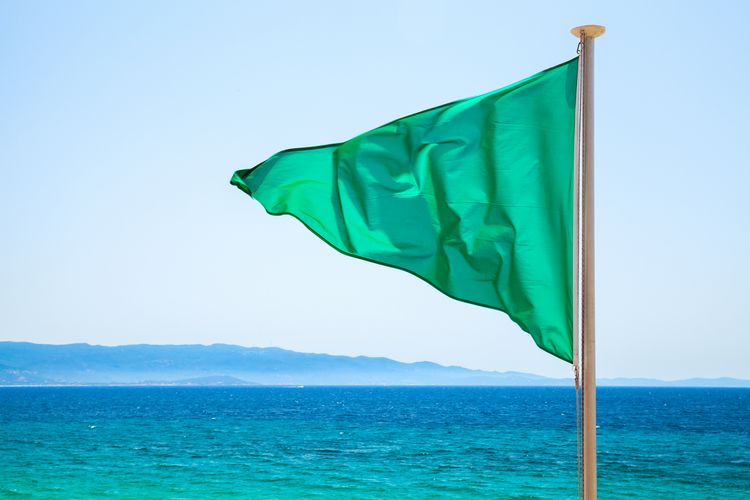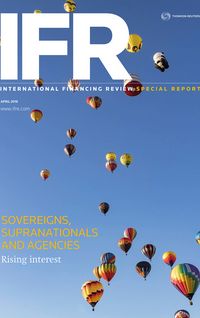Sovereign Green bonds are back in the headlines. With three deals launched in February alone, a month of issuance to build on could turn 2018 into the year of the sovereign Green bond as borrowers display their sustainable colours.
Two new names, not to mention the first repeat issuer, were welcomed to the sovereign Green bond market in February.
Indonesia issued the first sovereign Green bond from Asia, its US$1.25bn five-year sukuk also representing the first Islamic Green bond from a sovereign. In Europe, Belgium added to the list of debutants with its €4.5bn 15-year inaugural offering, while Poland became the only country so far to tap the market for a second time. It successfully placed a €1bn August 2026 deal, having opened the market back in December 2016 with a €750m five-year.
Their appearance boosts the development of both the Green bond market and the world’s environmental aspirations.
“It’s obvious that governments need to do something to address the issues associated with climate change, and it’s obvious that they need private finance to help pay for it,” said Stephanie Sfakionos, head of sustainable capital markets, BNP Paribas. “Launching Green bonds helps communicate their commitment and gives investors something to buy.”
The deals add diversity in terms of name, type of issuer, structure, credit, liquidity and maturity and complement the range of assets available to sustainably motivated private investors.
The interest from that group is evident – all deals have so far benefited from bulging order books. It suggests there is a ready audience for more.
“We all want more sovereign issuers to come to the market and expectations are high that more will come this year,” said Jaspreet Duhra, senior client relationship manager at Oekom Research. “Momentum is building.”
It is a widely held point of view.
“More countries are expected to launch Green bonds and, as the market becomes more familiar with these investments, both the frequency and size of the issues might also escalate further,” said Jesus Martinez, portfolio manager with Aegon Asset Management. “Things are moving, and moving fast.”
There’s even potential for a snowball effect as countries compete to promote their green credentials to the market – and to their own electorate.
“Launching a sovereign Green bond has a certain political imperative,” said Sfakionos. “It could become harder to explain being last in the queue.”
Colourful patchwork
Hong Kong has already announced its intentions. In its 2018/19 budget, it plans to demonstrate its commitment to promoting green finance with the launch of a Green bond issuance programme bound by a ceiling of HK$100bn (US$12.74bn).
Proceeds will finance the government’s green public works projects and, it is hoped, encourage more issuers to finance green projects through the capital markets.
Sweden is also a candidate. In January, it took delivery of a report on developing the Green bond market, in which sovereign debt plays a part. While, in the UK, the Aldersgate Group (an alliance of leaders from business, politics and civil society driving action for a sustainable economy) published a report in March recommending the government launch Green bonds to help fund its climate obligations.
Promises, promises
The sovereign Green bond market seems full of promise, but that was the case this time last year. Poland had set the ball rolling and France had upped the excitement with its €7bn OAT due 2039 (plus subsequent taps). A long list of names was confidently tipped to join them.
Rumours suggested issuers were keen to visit the market, eager to promote their political commitment to sustainability and cement Green bonds as a force in mobilising private investment. The anticipated rush never quite materialised.
“For most governments, making good on even the best sustainable intentions is not always easy,” said Martinez. “It’s not just about issuance, it’s also about providing the right framework for others to use the market. It’s a full-time commitment.”
Building a green architecture is key to establishing the reporting, transparency, definitions and basic standards to attract local issuers and global investors.
“Sovereigns are in the unique position of being able to stimulate the market in a particular direction by creating favourable policy that encourages participants to act in certain ways,” said Tallat Hussain, Environmental Counsel at White & Case.
The complexity of creating a green ecosystem within each jurisdiction is no doubt partially responsible for the lack of major issuance in 2017 – as was the year’s geopolitical backdrop. Nevertheless, preparatory work was evidently under way in Indonesia, Belgium and Poland for them to appear so soon into the New Year.
There were, nonetheless, noteworthy developments in the guise of issuance from Fiji and Nigeria.
“2017 was a good year for sovereign Green bonds,” said Mindy Hauman, PSL Counsel at White & Case. “All four issues were foundational in their own way: Poland as first issuer and from a coal-based economy; France because of the depth and breadth of its commitment to sustainable financing: Fiji because it is an emerging market island with a comparatively small-scale economy; and, Nigeria as the first African sovereign and whose emerging market economy is petroleum-based.”
More work
It takes effort to develop the right environment for sovereign deals.
“Launching a deal requires a lot of work,” said Jean Deboutte, director strategy, risk management and investor relations at the Belgian Debt Agency. “There’s the framework, the second opinions, reporting mechanisms for the use of proceeds and impact. In addition, it’s a common project of different ministries, so we have to work with other departments to agree on the strategy.”
Finding and defining projects that qualify for the use of proceeds is not always straightforward and governments may also face legal restraints in how they spend funds raised.
Poland allows for proceeds to be set aside in a designated “green cash account” for disbursement into identified projects, while France opted for transparency through a three-pronged reporting approach.
Belgium adopted a similar methodology to that in France. It is the approach most likely to be favoured by nations governed by universality and ones that want to embed Green bonds into their existing bond activity.
“The basic idea was similar to France and the framework is not that different,” said Deboutte. “Budget law prohibits ring-fencing any income into specific spending. You need to demonstrate that you have had and continue to have the expenditures identified under the framework.”
Belgium’s choice of eligible projects was shaped by the country’s federal structure.
“We had to limit ourselves to expenditure on green projects within the Federal State Portfolio,” said Deboutte. “We had to ask whether we had enough material that satisfied our minimum size requirements for an OLO, which is €3bn.”
Size and liquidity of the obligation was an important concern for Belgium, as it was for France, as it wants to insert the Green bond within its government curve.
“The basic idea was similar to that of France with its green OAT,” said Deboutte. “We wanted to issue a normal OLO but with the addition of the Green Bond Principals, one which would put it into the OLO curve and was comparable to outstanding issues in terms of treatment, liquidity and market-making.”
Liquidity, of course, is also appreciated by investors.
Same pay
Governments, already faced with demands on resources (and budget competition between ministries), need to be convinced of the benefits before allocating ongoing funds to the management of Green bonds.
“Building a framework takes time, money and cooperation between governmental departments to implement processes – processes that will remain ongoing,” said Martinez. “It’s not easy and it raises the question of who pays.”
There is little evidence that issuing green over and above raising funds through established lines is cheaper (although some Green bonds show signs of outperformance in secondary trading).
That lack of premium may be surprising given the claim that the volume of sustainable funds far outweighs assets available. Yet any major pricing divergence from bonds that rank pari passu with other government debt would be a problem for investors.
“There were fears that pricing in a premium might provide an incentive for issuance where proceeds might not be used according to Green bonds policy,” said Martinez. “It shows the importance of transparency and the need for vigilance from investors.”
There may be some potential for early mover price tension, however.
“We priced at 1.5bp over the curve, which is sharp and lower than any recent deal, but it’s difficult to attribute that premium to launching a Green bond specifically,” said Deboutte. “In any case, that was not the primary aim of the exercise.”
Issuing green may not have a dramatic effect on pricing either way, but there are definitive capital markets benefits from going through the exercise.
“Pricing for Green bonds in primary and secondary is not too different to existing issues,” said Patrice Cochelin, sovereign analyst, S&P Global Ratings. “There’s no real major economic benefit or drawback from issuing green at this point. The main financial incentive is on the broader investor base, though.”
Belgium’s deal attracted interest from green funds as well as traditional investors. It was also a very public commitment to Green bonds and its sustainable intentions.
“Belgium was slightly behind the curve in developing its green financial market and this goes some way in addressing that,” said Deboutte. “The OLO represents a benchmark for other Belgian issuers and also stimulates investor interest in the sector.”
Raising public awareness remains key to building a green financial market. Sovereigns will play a distinctive role in establishing a green financial system and issuance will form part of that process. Get ready for more.
To see the digital version of this roundtable, please click here
To purchase printed copies or a PDF of this report, please email gloria.balbastro@tr.com



